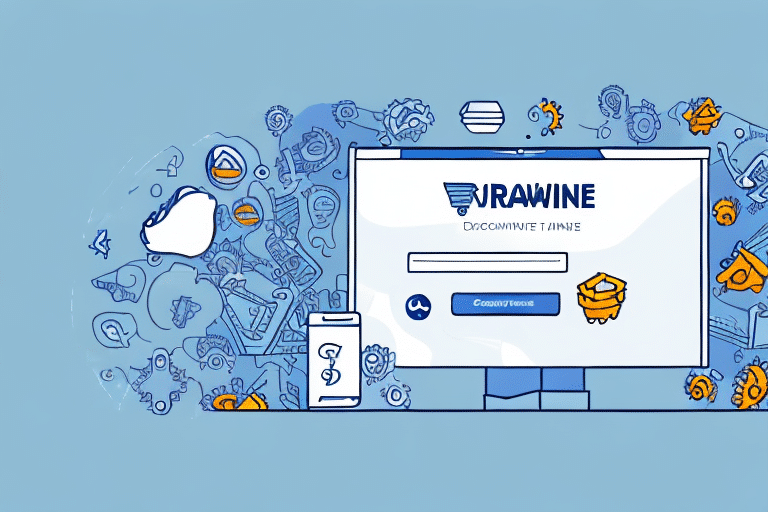Transitioning from Crowdfunding to Ecommerce: A Comprehensive Guide for Businesses
Crowdfunding has emerged as a popular method for businesses to raise funds for their products or projects. However, as businesses expand, they often encounter limitations with crowdfunding, necessitating a shift towards more sustainable revenue models. Ecommerce offers a robust platform for businesses to manage their sales and marketing strategies effectively. This guide delves into the advantages of migrating to ecommerce and outlines the critical factors businesses should consider during this transition.
Understanding the Limitations of Crowdfunding
While crowdfunding provides an initial influx of capital, it presents several challenges for sustained business growth:
- One-Time Funding: Crowdfunding typically offers a single burst of funding, lacking a continuous revenue stream essential for long-term operations.
- Platform Fees: Crowdfunding platforms often take a percentage of the funds raised, which can significantly reduce overall profits.
- Market Fit: Not all business types are suited for crowdfunding. Products or services with unique selling points or strong emotional appeal tend to perform better.
- Resource Intensive: Successful campaigns require extensive planning, marketing, and logistical efforts, which can strain resources, especially for small businesses.
Additionally, maintaining momentum post-campaign can be challenging, as businesses may struggle to convert one-time backers into repeat customers.
Benefits of Adopting Ecommerce for Business Growth
Ecommerce offers a sustainable solution for businesses aiming to generate consistent revenue and expand their market reach:
- Global Reach: An online store can attract customers from around the world, breaking geographical barriers.
- Cost Efficiency: Operating online reduces the need for physical storefronts, leading to significant cost savings.
- Data-Driven Insights: Ecommerce platforms provide valuable analytics on customer behavior, enabling businesses to tailor their marketing and product offerings effectively.
- Control Over Branding: Businesses have complete autonomy over their brand presentation, customer experience, and marketing strategies.
- Scalability: Ecommerce platforms can easily scale with business growth, accommodating increasing inventory and customer bases without substantial infrastructure changes.
Essentials for Setting Up an Ecommerce Store
Website Design and User Experience
A user-friendly and aesthetically pleasing website is crucial for attracting and retaining customers. Key elements include:
- Responsive Design: Ensure the website is optimized for all devices, including mobile phones and tablets.
- Intuitive Navigation: Simplify the user journey with clear menus and search functionalities.
- High-Quality Visuals: Use professional images and videos to showcase products effectively.
Search Engine Optimization (SEO)
Optimizing your website for search engines increases visibility and drives organic traffic. Essential SEO practices include:
- Keyword research and integration
- Optimizing meta tags and descriptions
- Creating quality content that addresses customer needs
- Building backlinks from reputable sources
Payment Processing and Security
Offering secure and diverse payment options enhances customer trust and convenience:
- Integrate reputable payment gateways like PayPal, Stripe, and credit card processors.
- Implement SSL certificates to ensure data encryption and security.
- Comply with Payment Card Industry Data Security Standard (PCI DSS) to protect customer information.
Order Fulfillment and Logistics
Efficient order fulfillment is critical for customer satisfaction. Consider the following:
- Inventory Management: Utilize software to track stock levels and manage reordering processes.
- Shipping Solutions: Partner with reliable carriers to ensure timely and cost-effective delivery.
- Return Policies: Develop clear and customer-friendly return and exchange policies to build trust.
Strategic Considerations for a Successful Ecommerce Transition
Developing a Robust Ecommerce Strategy
A well-defined strategy is essential for navigating the complexities of ecommerce:
- Define Goals: Establish clear objectives such as increasing sales, expanding market reach, or enhancing brand awareness.
- Identify Target Audience: Understand the demographics, preferences, and behaviors of your ideal customers.
- Budget Allocation: Allocate resources effectively for website development, marketing, and ongoing maintenance.
Market Research and Competitive Analysis
Conduct thorough market research to understand industry trends and competitor strategies:
- Analyze Competitors: Identify strengths and weaknesses of competitors to find opportunities for differentiation.
- Understand Market Trends: Stay updated with the latest ecommerce trends to keep your business relevant.
- Customer Insights: Gather feedback to refine products and services based on customer needs.
Choosing the Right Ecommerce Platform
Selecting the appropriate platform is pivotal for your online store's functionality and scalability. Consider the following options:
- Shopify: Known for its ease of use and extensive app ecosystem, suitable for businesses of all sizes.
- WooCommerce: A flexible, open-source solution ideal for those familiar with WordPress.
- Magento: A robust platform geared towards larger businesses with complex requirements. Learn more about Magento.
Managing Ecommerce Operations Effectively
Inventory and Fulfillment Management
Effective inventory management prevents stockouts and overstock situations:
- Use inventory management software to track stock levels in real-time.
- Consider dropshipping or third-party logistics providers to handle fulfillment.
- Optimize warehouse layout and processes to enhance efficiency.
Customer Service Excellence
Providing exceptional customer service fosters loyalty and drives repeat business:
- Implement multiple support channels such as email, live chat, and phone support.
- Train staff to respond promptly and effectively to customer inquiries.
- Use customer feedback to continually improve service quality.
Marketing and Advertising
A comprehensive marketing strategy is essential to drive traffic and sales:
- SEO: Optimize website content to rank higher in search engine results.
- Content Marketing: Create valuable content to attract and engage your target audience.
- Social Media Marketing: Leverage platforms like Facebook, Instagram, and LinkedIn to promote products and engage with customers.
- Email Marketing: Use targeted email campaigns to nurture leads and encourage repeat purchases.
Measuring Success and Addressing Common Challenges
Key Metrics to Track
Monitoring performance metrics helps evaluate the effectiveness of your ecommerce strategy:
- Website Traffic: Measure the number of visitors and their behavior on your site.
- Conversion Rate: Track the percentage of visitors who make a purchase.
- Customer Acquisition Cost (CAC): Calculate the cost incurred to acquire a new customer.
- Customer Lifetime Value (CLV): Assess the total revenue a business can expect from a single customer account.
- Average Order Value (AOV): Determine the average amount spent each time a customer places an order.
Overcoming Common Challenges
Transitioning to ecommerce presents several hurdles, but with strategic planning, they can be effectively managed:
- Technical Complexities: Hiring experienced professionals or outsourcing to reliable agencies can mitigate technical challenges.
- Inventory Management: Implementing robust inventory systems and partnering with third-party logistics providers can streamline operations.
- Market Competition: Differentiating your brand through unique value propositions and exceptional customer experiences is crucial.
- Security Concerns: Investing in cybersecurity measures and compliance can protect both your business and your customers.
Conclusion
Transitioning from crowdfunding to ecommerce offers businesses a sustainable pathway to growth, empowering them to manage their sales and marketing autonomously. While the shift presents challenges, a well-crafted strategy, efficient operations, and continuous performance monitoring can facilitate a successful transition. By embracing ecommerce, businesses can achieve sustained growth, expand their reach, and enhance their brand presence in the digital marketplace.






















